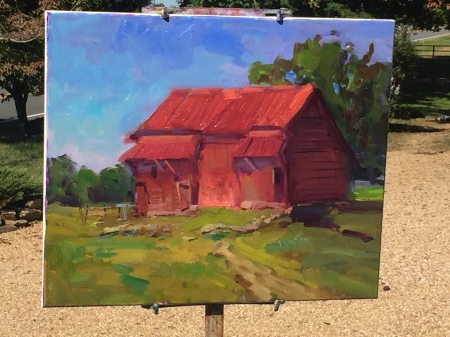My intention is to give friends of Stauber Farm a summary in words and photos of what has happened this season in the gardens around the Farm.
My recollection starts with the pick up of 12 flats of lettuce plants in late February that Rebecca at Myers Nursery started from seeds that I delivered to her in early January. These varieties are my favorites that I have grown through the years.
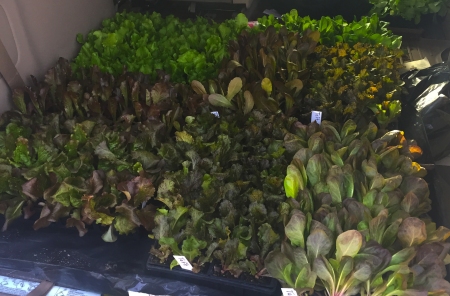 I like to try a new variety each year and delete one from the previous year. The favorites in the order of my preference are Nevada, Rouge d’Hiver, Marvel of 4 Seasons, Red Sails, Butter Crunch, and Mottstone. We plant the plants under a row cover during the first week of March as the temperatures begin to warm. I cover plants with agribond row cover that keeps the frost,wind and rabbits away from the plants. Row cover can be removed on warm days for watering if needed. Harvest starts in early April for personal and restaurant use.
I like to try a new variety each year and delete one from the previous year. The favorites in the order of my preference are Nevada, Rouge d’Hiver, Marvel of 4 Seasons, Red Sails, Butter Crunch, and Mottstone. We plant the plants under a row cover during the first week of March as the temperatures begin to warm. I cover plants with agribond row cover that keeps the frost,wind and rabbits away from the plants. Row cover can be removed on warm days for watering if needed. Harvest starts in early April for personal and restaurant use.
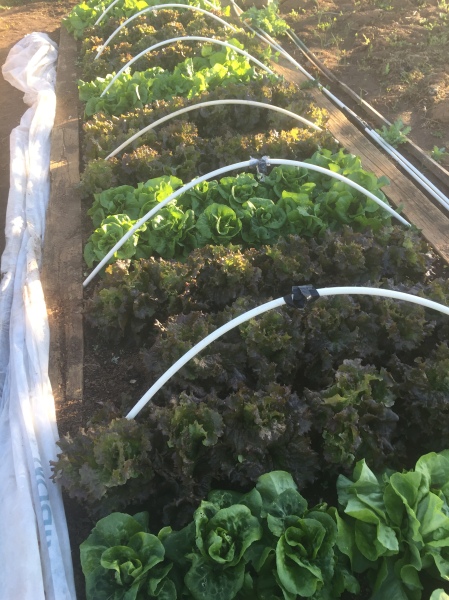 This year Chef Mike Mort of FCC purchased all my lettuce over a four week period.
This year Chef Mike Mort of FCC purchased all my lettuce over a four week period.
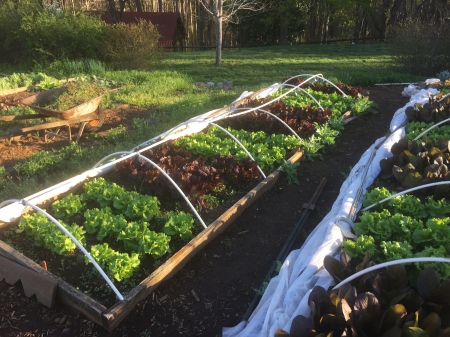
On April 10 (the final frost date for our area) we had an unusually hard frost down to 22 degrees, which severely damaged the peony buds and wiped out all the figs that were thumb tip sized.
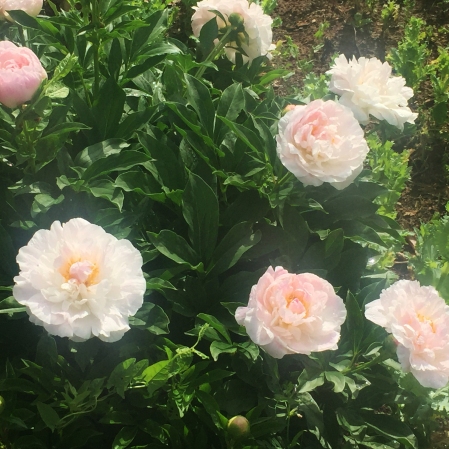
March had been a mild month and the figs and peony buds were two weeks ahead of schedule. Fig trees had to be severely pruned back to remove dead wood. We may get a few figs at the end of the season! Interestingly, the blueberry and blackberries were not damaged and there were nice harvests from the blueberries, which we covered with netting just to insure that we got our share vis-a-vis the birds.
I plant Amaryllis bulbs that have been stored in my basement all winter during the first week of April. They begin to bloom about five weeks after being planted and bloom for 3 weeks. I dig them up and store them in the basement before the first frost.

By the middle of April, the iris present on the Farm since 1987 when we purchased them, began to bloom. The flower is a tall sturdy white bloom with a hint of blue. I thin the rhizomes every 3rd year to keep them blooming. Call me if you want rhizomes for your garden.
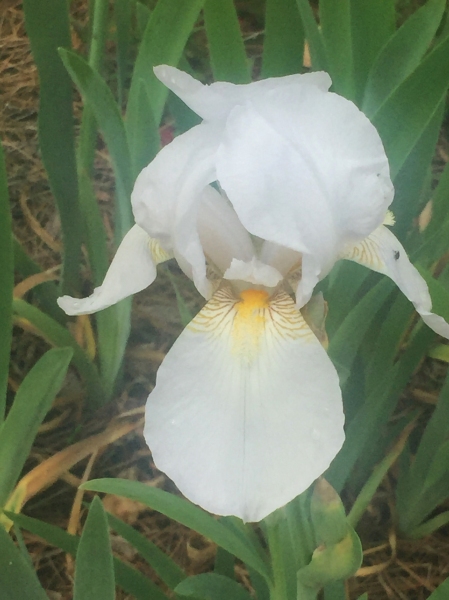
Then come the poppies, which I consider the signature plant in my garden.
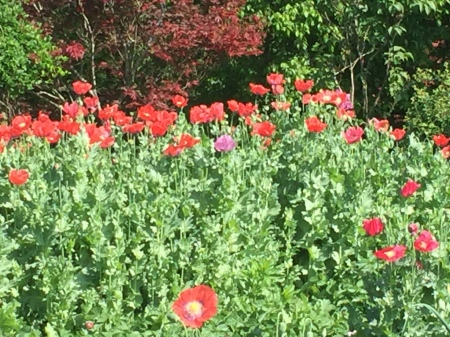 I call them “Ms. Bowen’s poppies” because she gave me seeds after I fixed her broken hip at age 99 years some 20 years ago. She passed away at age 108 at Salemtown. The poppy blooms bring breathtaking beauty and bees to my garden during the first 3 weeks in May.
I call them “Ms. Bowen’s poppies” because she gave me seeds after I fixed her broken hip at age 99 years some 20 years ago. She passed away at age 108 at Salemtown. The poppy blooms bring breathtaking beauty and bees to my garden during the first 3 weeks in May.
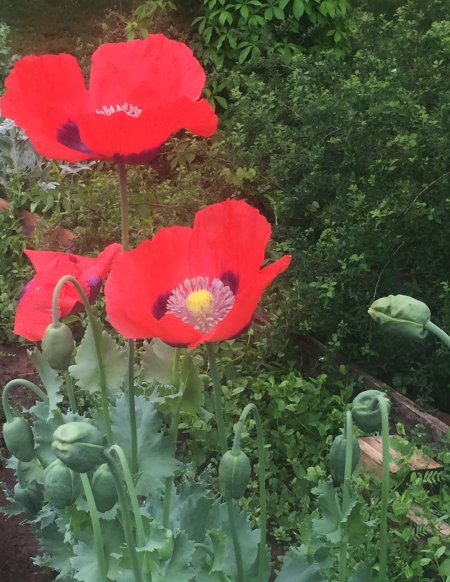 Then in June the pods form, full of poppy seeds for 2 weeks, and the gold finches move in to dine and scatter the seeds across my garden for next years’ crop of flowers.
Then in June the pods form, full of poppy seeds for 2 weeks, and the gold finches move in to dine and scatter the seeds across my garden for next years’ crop of flowers.
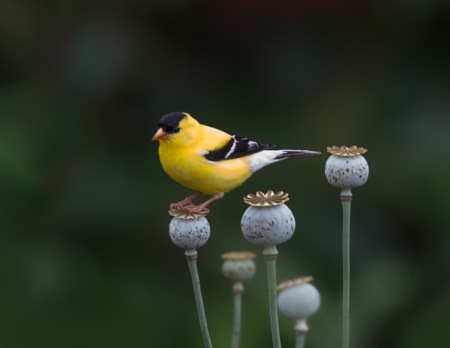
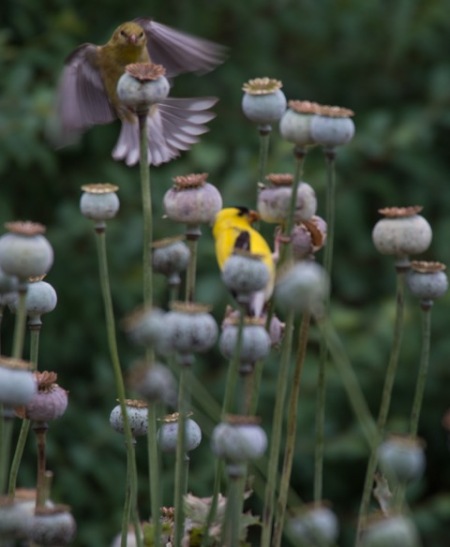
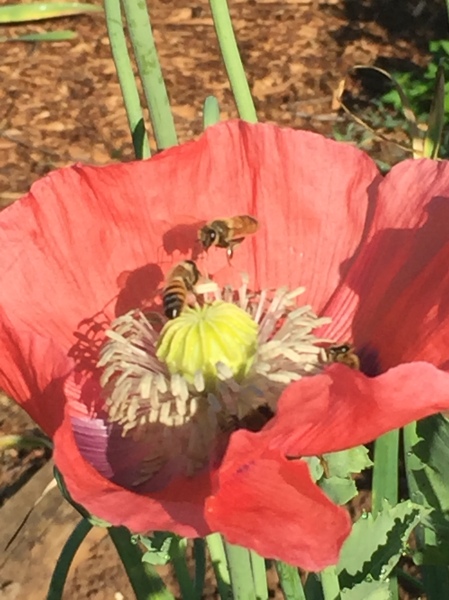
During the first week of June, I plant zinnia seeds (zinnia elegans) in my beds where some of the lettuce was harvested. The seeds are planted 6 inches apart and 1/4 inch deep with half a handful of potting soil over the seed. If kept slightly moist, the seeds germinate in four days and bloom in 6 weeks, providing a wonderful variety of color in the garden and cut flowers in the house. I have found the zinnias do not like to be transplanted from packs purchased at the nursery.
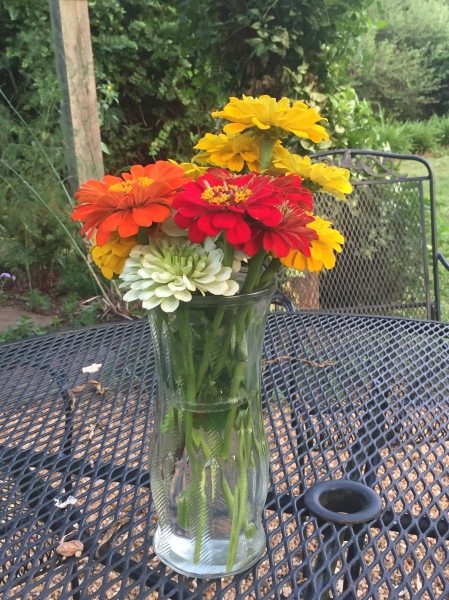
During the second week of June the purple coneflowers (given to me by Sarah Watts) were in full bloom for the outdoor wedding and reception held under the tent beside the house. The profusion of blooms lasted for 6 weeks into the heat of the Summer.
By the first of July the Buddleia, or butterfly bushes, started to bloom. And true the their name, the butterflies are attracted to the fragrant blossoms (sometimes called “summer lilac”).
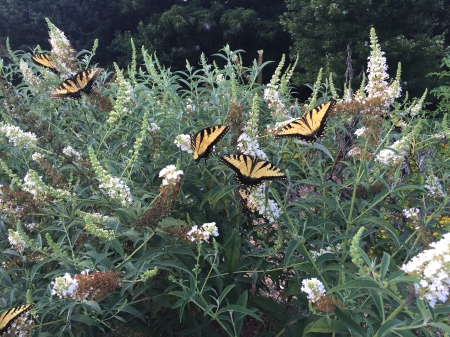
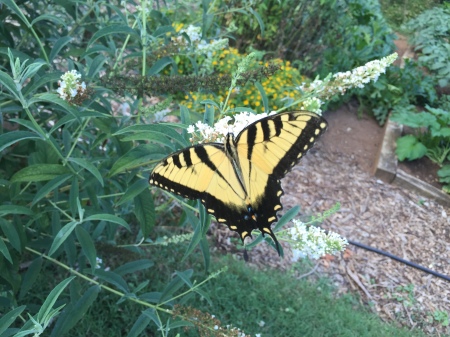
During the heat of the summer, with fairly frequent rain showers, the Roma II bush beans thrived, along with yellow squash and Annie Oakley okra. Later in the summer Fran’s heritage bush beans thrived along with the crowder peas and butternut squash. The Yukon gold potatoes planted the third week of March were harvested in late June .
Oh, and I forget the tomatoes! I decided to cut back on the number of plants and only planted eight (my three favorite varieties: Cherokee purple, Goliath, and Viva Italia roma). We had a very nice crop. I say “we” because I could not have my garden as described without the help of Bernardo and Eddie. We use no commercial fertilizer (only our composted combination of chicken and sheep manure, and leaves (and a little lime). No weed killers in site. And we try to hand pick insects. We love to see ladybugs and preying mantis friends. Over the years and confirmed from my reading, healthy plants grown in healthy soil are like the human body in being able to fight off bugs, bacteria and disease. I love my garden because it makes me acutely aware of the changing of the seasons and the rhythm of nature. It is also the place where we all started “ In the beginning.”
